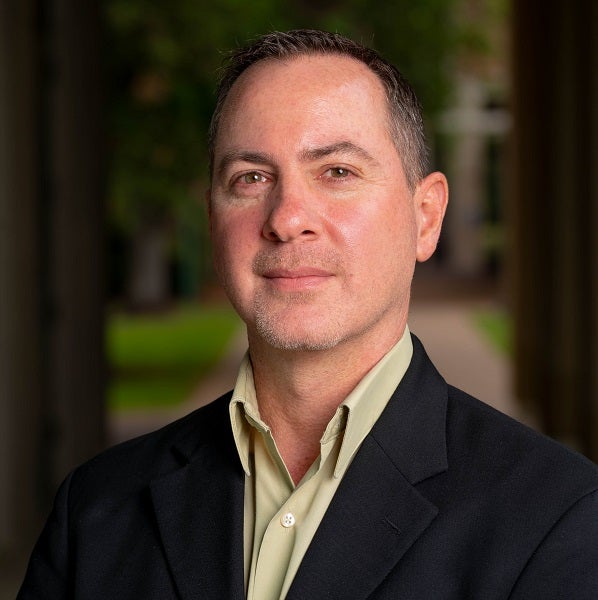
Welcome to the Rice University Chemistry Department! Located in Houston, Texas, the 4th largest and the most diverse city in the United States, the Department of Chemistry is an engine for discovery and innovation in the state of Texas and beyond, from fundamental research involving organic and bioorganic chemistry, theory, computation, plasmonics, spectroscopy, nanomaterials, and much more, to translational and applied research including advanced materials for aerospace applications, nanostructured membranes for water purification, metal nanoparticles for cancer treatment, and biomaterials for spinal cord regeneration (click here to see more). Rice Chemistry connects many of the physical sciences and technical majors across the University, promoting an extremely collaborative environment that reaches beyond the Rice campus to a variety of institutions, including the Texas Medical Center (the largest medical center in the world), the burgeoning Houston energy and manufacturing industries (particularly oil and gas), and the broader research community.
Our History
Historically, chemistry has been taught at Rice since the University’s inaugural year in 1912. The first chemistry building opened in 1925, which was originally named the Chemistry Building, but is now known as Keck Hall. Today, the Chemistry Department is represented in six buildings across campus: Space Science and Technology Building, Dell Butcher Hall, George R. Brown Building, Anderson Biological Laboratories, Bioscience Research Collaborative, and Ralph S. O’Connell Building, with the Chemistry Department headquarters currently located in the recently renovated Space Science and Technology Building. The contributions of the Department to the fundamental and applied sciences are wide-ranging, with important discoveries in all areas of chemistry. A pivotal moment for the Department was the discovery of the Buckminsterfullerene in 1986 by the research groups of Smalley, Curl, and Kroto, (Smalley and Curl were Rice Professors) denoting the onset of the golden era of nanotechnology. In 1995, Science named Buckminsterfullerene the molecule of the year, and, in 1996, Smalley, Curl, and Kroto were awarded the Nobel Prize for its discovery. Since then, Rice Chemistry has been one of the world leaders in nanoscale materials research.
Our
People
Tag for Featured Pages grid on People page
Currently, the Department of Chemistry consists of 28 faculty with main appointments in Chemistry and more than 20 additional faculty from other departments who bear joint appointments in Chemistry. Our faculty is well-recognized for their contributions to chemistry, with two Nobel laureates, four current members of the National Academy of Sciences, one member of the National Academy of Inventors, one Wolf recipient, and myriad national and international awards from a constellation of scientific organizations. Core faculty research expenditure amounts to over $11 million per year, averaged over the past five years. This funding supports over 100 graduate students and 40 postdoctoral scholars. The Department awards an average of 20 doctoral degrees a year, and graduate students have been authors on 1094 publications in the past five years, including 322 first-author publications. This represents an average of over 10 published papers per graduate student. Interested students can apply here. In addition, there are currently over 60 chemistry majors (freshmen are not considered in this count), with about 24 students per year graduating with bachelor’s degrees in Chemistry. Rice Chemistry is enriched and supported by 16 staff members. Rice programs in Chemistry and Materials have been ranked among the top world programs by the Max Planck Society. This study, in contrast with other rankings, measures excellence on the rate at which an institution produces highly-cited scientific papers.
Diversity, Equity, Awareness, and Inclusion (DEAI)
The Chemistry Department community is composed of students, faculty, and staff of different genders, nationalities, races, and ethnicities. We respect, encourage, and celebrate this diversity and welcome a respectful and inclusive exchange of ideas, points of view, and opinions. We are committed to removing barriers that prevent equitable access to scientific and educational resources for all our members. Several programs exist in the department that support DEAI, including Chemistry Education for Minorities (ChemGEM), Facilitating Advances in Chemistry for Equity and Transparency for Scholars (FACETS), Fun with Chemistry, and our NSF-funded Research for Undergraduate (REU) Program: Research and Leadership Enabling Discoveries (RLEAD) in Chemical Nanoscience.
Our Facilities
Our research infrastructure is superb, with state-of-the-art instrumentation and support through the University’s Shared Equipment Authority (SEA). SEA is an institutional office that hosts, supports, and maintains more than 100 instruments across campus. Instruments such as X-Ray Diffractometers, Mass Spectrometers, Microscopes (such as SEM, TEM, STEM and AFM), and many others are under the umbrella of SEA. Important capabilities such as the Clean Room, Animal Facilities, and the Electron Microscopy Center enhance the research enterprise of our faculty. Our faculty is also associated with a variety of Institutes and Centers, such as the Smalley-Curl Institute (SCI), Rice Advanced Materials Institute (RAMI), Rice Sustainability Institute, and the Institute of Biosciences and Bioengineering (IBB), as well as the Center for Theoretical Biological Physics (CTBP), the Nanotechnology-Enabled Water Treatment (NEWT) Center, Rice Center for Quantum Materials (RCQM), and the Carbon Hub. In addition, while chemistry stockrooms are rare these days, the Rice Chemistry Department has a fully supplied stockroom that offers laboratory supplies, chemicals, and equipment to our faculty and students.
Our Mission
We proudly endeavor to discover, understand, educate, and innovate by addressing important and timely problems in the chemical sciences. Our research and education efforts encompass the broad areas of Materials through Chemistry, Chemistry to Probe and Manipulate Life, and Chemistry for Energy & Sustainability. We invite you to engage with us and support this important mission.
Warmest regards,
Angel Martí, Ph.D
Department Chair
